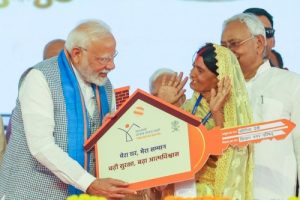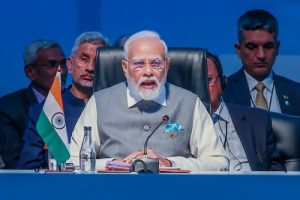Two rather unproductive, illogical and mostly futile exercises were reported recently: Exhibitors in Chennai met this past week and drafted some demands which actually set terms on film producers! The other was a TISS report on Equitable Gender Representation in Hindi Cinema.
TN Exhibitors’ Desperate Demands
Tamil Nadu Film Exhibitors’ Association (TNFEA) has put forward some demands on filmmakers that don’t look businesslike. The demands and the tone sound dictatorial. Not to mention confusing. Though impractical, such matters require the parties concerned to sit across the table and discuss.
The exhibitors want a film to be released on OTT only after eight weeks, or 56 days, following its theatrical release. Presently, the producers follow a four-week embargo.
This demand just amounts to asserting the exhibitors’ status and is not necessary. Because, neither a producer, nor the OTT platform will release a film till it is collecting revenue at the box office.
Take the example of ‘The Kerala Files’, which continues to do well at the cinemas and is yet to be released on OTT. Otherwise, why stall the OTT release of other films which get discontinued from cinemas in a week or two?
And what is the next demand? The exhibitors want a producer who makes a film for release directly on OTT to share 1 per cent of the OTT sale revenue with the exhibitors! What for? Is this some kind of levy the cinemas are entitled to? A filmmaker is free to make content for any medium and for that he is not accountable to anybody, least of all share revenue. What is the logic for this demand?
What is this allergy of exhibitors to the OTT format? Did they ever ask for a share from the sale of a film’s television or satellite rights? Then, why now?
The other demand from the exhibitors is that they be allowed to screen events like IPL matches and other such events (no proposal to share a percentage with filmmakers here!). Against this, the exhibitors should be fair and give a share of advertisements they screen as well as revenue from the cafe and parking. After all, this income is possible because of the films the people come to watch.
Also, they should be allowed to charge a maintenance fee like in other states. Fair enough. But that is between the state and the exhibitors.
The funniest demand, though, is this: The exhibitors want the top Tamil stars to do at least two films a year. This appeal is especially directed at Rajinikanth, Ajith Kumar and Vijay. Are they supposed to make sure your cinemas run successfully and earn profits?
Ridiculous is how one can describe these demands of the exhibition trade of Tamil Nadu.
Gender Compliant Movies: Dream On
A new research report by the School of Media and Cultural Studies at the Tata Institute of Social Sciences (TISS), Mumbai, reveals that on- and off-screen women and queer representation in box-office hits remains largely stereotypical.
This statement in itself says a lot. It says, women and queer representation remains stereotypical in box-office HITS. Going by the summary of the research it can be concluded, as it does not matter how female actors are cast, it is the male actor who carries a film and it becomes a hit!
The research is exhaustively titled ‘Lights, Camera, and Time for Action: Recasting a Gender Equality Compliant Bollywood’. Such a clichéd title!
The research was carried out by TISS and funded by the US Consulate General in Mumbai. The report was released by the brand new celebrity, Guneet Monga Kapoor, thanks to her Oscar-winning feature, ‘Elephant Whisperers’, Vidya Balan and Nandita Das, along with representatives of the Producers’ Guild, Federation of Western India Cine Employees (FWICE) and Western India Motion Pictures and Television Sound Engineers Association (WIMPTSEA)!
Wonder what these three trade bodies have to do with casting of actors in films. In the Hindi film industry, unlike in the South, no trade body dictates terms to filmmakers. They and their members, in fact, depend on filmmakers for their existence.
The one producers’ body present there was the Guild. Is it going to tell its members that henceforth their films and television content should have women in dominating roles vis-a-vis male actors?
Talking of ‘Guneet Monga’, before her Oscar fame, she did make a few mainstream movies. She was one of the producers of the grossly violent and abusive film, ‘Gangs Of Wasseypur’, besides ‘The Lunch Box’, ‘Masaan’, ‘Aiyyaa’, ‘Zubaan’, and so on.
None of them bothered about gender equality compliance.
The casting of women is what the TISS report describes as stereotypical! In a woman-oriented film, ‘Aiyyaa’, guess what is the theme? ‘A woman goes on a hunt for her dream man!’
As for Vidya Balan, she has done some woman-oriented films and excelled in films like ‘Dirty Picture’ and ‘Kahaani’. ‘Dirty Picture’ was said to be based on the South Indian siren Silk Smitha; ‘Kahaani’ was about a woman on a mission to find and execute the wrongdoer, an enemy of the country.
Fine, she had the right to talk about the issue of gender representation, but that was till she did a sequel, ‘Kahaani2: Durga Rani Singh’. Here, Balan, the woman with determination and killer instinct of ‘Kahaani’, turns into a meek person. It was such a convoluted story that nullified the image and character she built for herself in ‘Kahaani’.
Why did Balan do the ‘Kahaani’ sequel? How can an artiste do a film totally contradicting the character she established in ‘Kahaani’? It is all about money. If Balan is so conscious about gender equality compliant Hindi films, the ‘Kahaani’ sequel did not show any signs of that.
Coming to the economics of filmmaking, how much did ‘Kahaani’, about a woman on a mission, collect at the box office compared with ‘Ek Tha Tiger’, a film about a man on a mission? ‘Kahani’, a rare woman-oriented hit, collected Rs 80 crore; ‘Ek Tha Tiger’ made Rs 194 crore.
Just two weeks back, a film titled ‘Neeyat’ with Balan in the lead was released. It collected Rs 3 crore or thereabouts as its lifetime business!
There have been films such as ‘English Vinglish’ and ‘Mom’ with Sridevi in the lead, and ‘Matra’ with Raveena Tandon as the protagonist. Such films are appreciated, but that’s about it. No box-office glories there. Appreciation may be good for the actor but does not help the producer.
Female stars also covet the National Award along with sundry others and take upon themselves to make films with awards in mind. Deepika Padukone produced ‘Chhapaak’, Anushka Sharma made ‘Phillauri’, ‘NH19’ and ‘Pari’.
What does Tata’s TISS and US consulate have to do with Hindi or the Indian film industry? Aren’t female stars in the US making some similar demands? What was the purpose of funding such a survey while you have the same problem at home, whether in films or in the corporate world. It is not for Tatas to get into doing such superficial studies. They have tried their hand at filmmaking and retreated, so they should know better.
Research generally means surfing Google and other available sources online. The fact is, there were times when women got equal or more prominent roles to play in Hindi films. Either they carried the film or complemented the proceedings. These female actors were Meena Kumari, Waheeda Rehman, Nargis and such. Wonder if such talent can be matched today.
Filmmaking is a business, creativity is incidental. And this business of research and seminars about films is humbug.
An actress is always at liberty to refuse a role if she feels it is not gender compliant!

























Add Comment